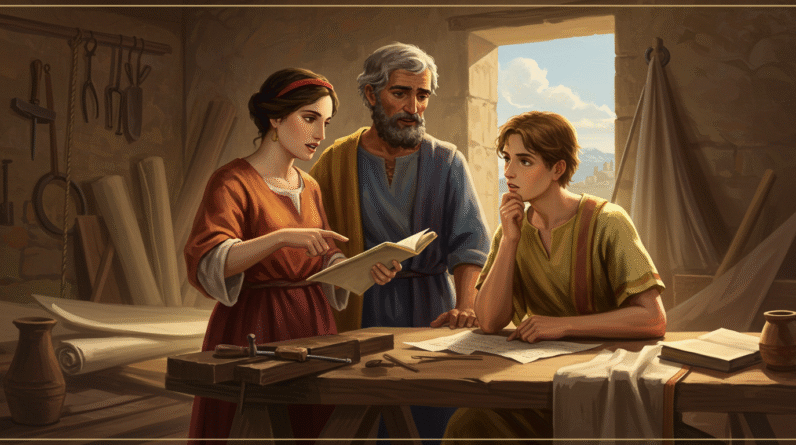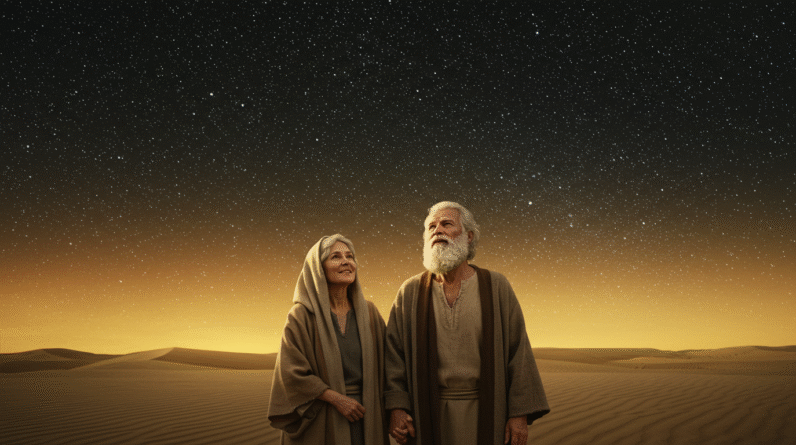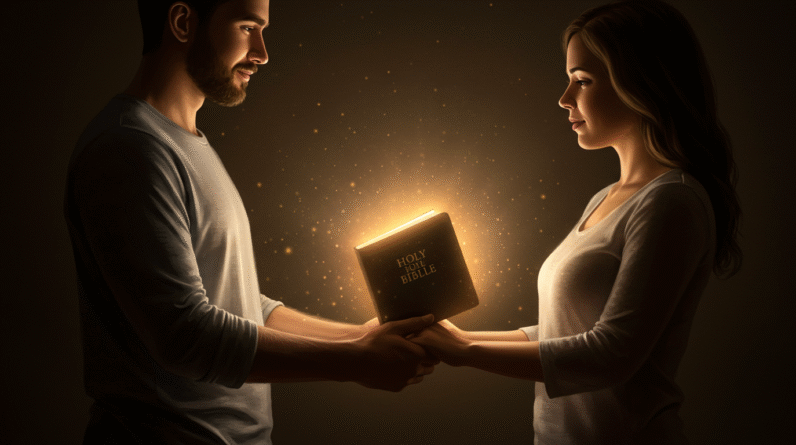Love And Sacrifice: The Story Of Ruth And Boaz
You’re about to walk through one of the Bible’s most tender stories, a small but powerful narrative that weaves love, loyalty, sacrifice, and faith into a model for relationships. The story of Ruth and Boaz reads like a quiet romance, but it’s also a drama about social obligation, God’s providence, and human choice. Along the way, you’ll discover practical Ruth and Boaz marriage lessons that still apply to your life today. As you read, keep in mind the original story in the book of Ruth. For background on the opening scene, see Ruth 1:1-5.
Why this story still matters to you
When you think about modern romance, survival, family obligation, or faith-driven decisions, it’s easy to assume those are separate spheres. Ruth and Boaz show you they aren’t. Their story isn’t a textbook romance; it’s a domestic and legal drama that turns into marriage. You’ll find Ruth’s loyalty, Boaz’s integrity, the community’s role, and God’s quiet hand—all elements you can learn from. The book begins with a faithful vow from Ruth to Naomi that illustrates the seriousness of commitment: Ruth 1:16-17.
The setting: famine, family loss, and migration
The backdrop matters. You’re not only reading a love story; you’re stepping into a world where famine forces families to migrate and where death leaves women vulnerable. The opening chapters show how economic hardship and social structures shaped personal decisions. Naomi, Ruth, and Orpah move from Bethlehem to Moab because of famine, and tragedy follows. Ruth’s response to Naomi’s grief sets the whole narrative in motion. For the setup, read Ruth 1:6-18.
Ruth’s loyalty: a radical commitment
Ruth’s famous pledge to Naomi—“Where you go I will go; your people will be my people; your God my God”—isn’t a throwaway line. It’s a radical, life-altering commitment that costs her comfort, identity, and security. When you look at Ruth’s choice, you see a model of sacrificial loyalty that becomes a bedrock for marriage. That vow is recorded in Ruth 1:16-17, and it’s one of the key texts you’ll return to when thinking about Ruth and Boaz’s marriage lessons.
How culture shaped opportunity and vulnerability
In ancient Israel, widows and foreigners had precarious social standing. Ruth’s status as a Moabite and a widow meant you could easily overlook her. But the law and social practices also created opportunities—gleaning for the poor, family obligations, and the “kinsman-redeemer” role. Understanding this context helps you see why Ruth’s decisions were courageous and why Boaz’s responses were significant in both legal and moral terms. See the social provisions mentioned in Ruth 2:2-3.
Boaz: the gentleman and the guardian
Boaz is introduced in a way that invites you to admire him for more than physical attraction. He’s a landowner who respects the law and shows prompt generosity to the vulnerable. His protection of Ruth is practical—he instructs his workers to let her glean safely—and personal—he praises her character. When you read his words and actions, you see the kind of faithful leadership that complements sacrificial loyalty. His treatment of Ruth is described in Ruth 2:8-12.
What Boaz does that you can emulate
Boaz does several concrete things that influence the relationship trajectory: he acknowledges Ruth publicly, ensures her safety, instructs his workers, and provides for her needs. These aren’t flashy gestures; they’re steady actions that build trust. If you’re looking for practical Ruth and Boaz marriage lessons, notice how consistency and integrity matter more than grand declarations. For the provision and protection scene, see Ruth 2:14-16.
The kinsman-redeemer: law, love, and legal rescue
The Bible’s concept of redemption—people redeeming land or relatives to restore them—shapes the climax of this story. Boaz acts as a “kinsman-redeemer,” a legal figure who could buy back property and marry a widow to preserve the family line. This isn’t just a legal technicality; it’s theological and relational. When you grasp how law and love operate together here, you’ll see how obligations can be acts of mercy. For the legal exchange and Boaz’s role, consult Ruth 4:1-10.
How the redeemer concept reframes romance
In modern romance, you might narrowly focus on chemistry or emotion, but the redeemer role illustrates a broader way to think about commitment: as a restorative act. Marriage, in this story, repairs lineage and protects the vulnerable. You can borrow this perspective: your commitments might be about stewardship, protection, and restoration—ideas central to the Ruth and Boaz marriage lessons.
The threshing floor: courage, consent, and wisdom
One of the most debated scenes is when Ruth approaches Boaz at the threshing floor. You might feel awkward reading it, but if you dig into the cultural cues and the characters’ intentions, you’ll find a scene packed with respect and careful consent. Ruth’s request is bold yet measured; Boaz responds with honor and clarity about any legal obstacles. This episode offers you lessons about humility, honest communication, and respecting boundaries in courtship. The encounter is detailed in Ruth 3:1-13.
Consent, reputation, and strategy
Ruth doesn’t act impulsively. Naomi advises her, and Ruth follows a plan that respects Boaz’s reputation and leverages social customs. Boaz, meanwhile, protects Ruth’s honor and explicitly refuses to act inappropriately. If you want Ruth and Boaz’s marriage lessons about dating, this chapter underscores how intentional choices, community input, and honoring reputation create a safe space for love to develop. For Boaz’s promise and his concern for propriety, see Ruth 3:10-13.
The role of Naomi: mentorship and tough love
Naomi might seem like a minor figure compared to the romantic leads, but you’d be mistaken. She’s the strategist behind Ruth’s approach to Boaz, and her guidance is sharp, practical, and maternal. Naomi’s involvement reminds you that family and mentors matter deeply in relationships. She models how to speak truth and push toward good outcomes even when emotions are raw. Naomi’s counsel and the results are in Ruth 3:1-5.
Why mentorship matters in modern relationships
Your relationships don’t exist in a vacuum. The Ruth and Boaz marriage lessons include recognizing when to seek counsel, when to accept correction, and how mentors can help you navigate cultural, legal, and emotional terrain. Naomi shows you how older generations can bless younger ones without controlling them—so you can take wise counsel without losing agency.
The public resolution: community, law, and celebration
The story moves from private plans to public resolution when Boaz goes to the city gate to settle the legal matter. There’s a formal exchange with another relative, witnesses, and the community’s validation. That public aspect matters: marriage in Scripture often involves community affirmation. When your commitments are recognized publicly, they gain social weight and accountability. The public transaction and marriage are recorded in Ruth 4:1-12.
Your relationship in the light of the community
If you’re applying Ruth and Boaz’s marriage lessons, you’ll notice the value of transparency. Public affirmation—whether legal, social, or spiritual—offers protection and blessing to the couple. It’s wise to think about how your relationships are embedded in family, church, and legal systems, and why that embedding can be a source of strength rather than constraint.
Marriage as a covenant and a rescue
The marriage that follows is more than personal happiness; it’s a restoration of Naomi’s family line and a fulfillment of providence. Ruth becomes the great-grandmother of King David, placing this romance inside God’s larger story. When you read Ruth 4:13-17, you’re witnessing how individual choices contribute to a larger narrative. That perspective is one of the richer Ruth and Boaz marriage lessons: your relationships can have ripple effects that matter beyond your lifetime.
Legacy and intentional family life
You might not expect your dating decisions to matter historically, but in Scripture, they often do. Ruth and Boaz show you how faithfulness in ordinary life can shape an ongoing legacy. If you’re thinking about family, community, or spiritual influence, adopt a long view: relationships are not just private—they’re part of God’s unfolding work in the world.
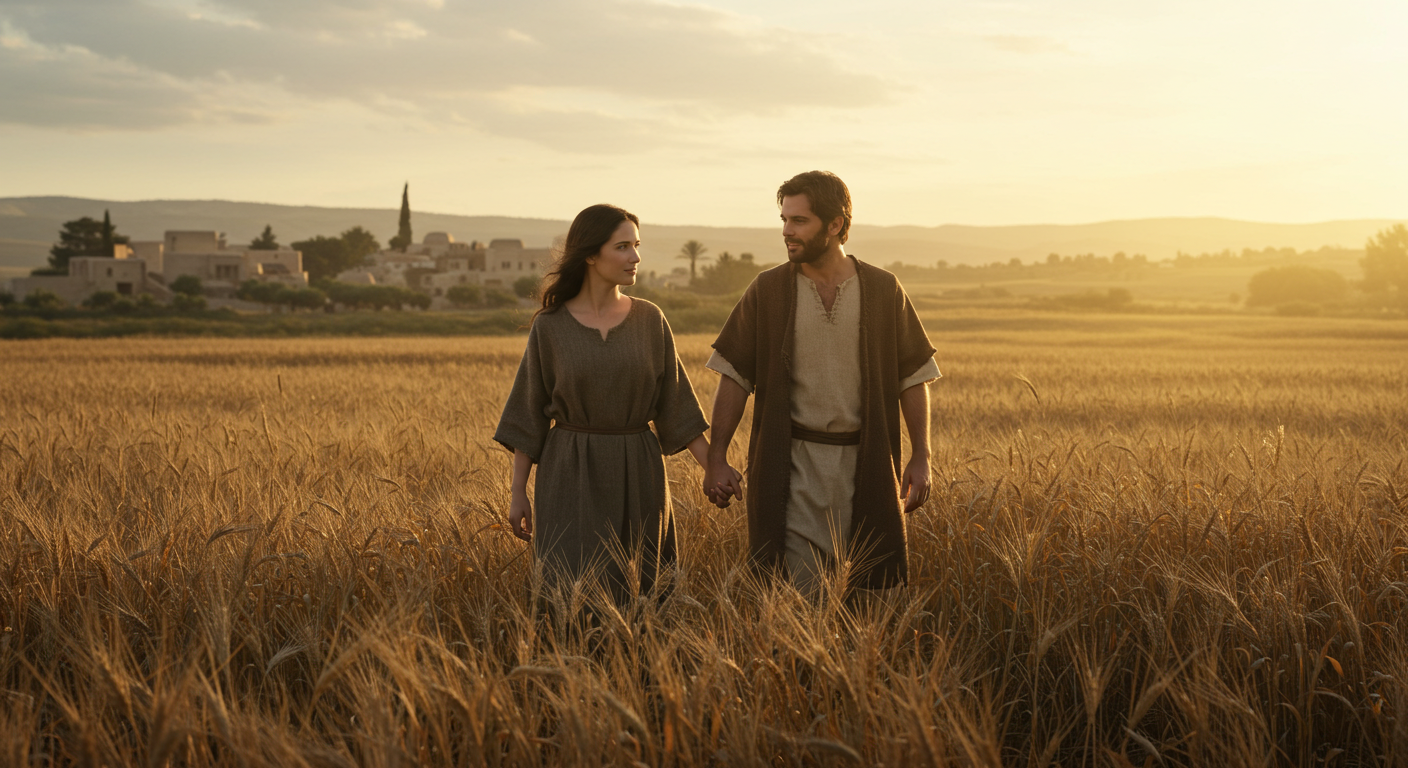
Practical Ruth and Boaz marriage lessons for your relationship
Now let’s turn to concrete takeaways. You want usable lessons you can apply. These are some core themes you can model:
- Sacrificial loyalty: Ruth left home and identity for Naomi and later for Boaz.
- Protective integrity: Boaz used his power to help and defend, not exploit.
- Wise counsel: Naomi guided Ruth through culturally risky terrain.
- Community validation: The town gate scene shows the importance of public responsibility.
- Patience and providence: Both waited on the right legal and social resolutions.
Each of these points reflects broader principles found across Ruth and Boaz’s marriage lessons. They’re practical values you can cultivate in your dating or marriage life—commitment, integrity, wise counsel, accountability, and patience. See Ruth’s commitment in Ruth 1:16-17.
Sacrificial loyalty in daily life
You don’t have to move across nations to show sacrificial loyalty. Small choices—staying when it’s hard, choosing the other’s flourishing over your convenience—demonstrate the same spirit Ruth embodied. Sacrifice becomes the language of trust and security. This lesson is central to the Ruth and Boaz marriage lessons and reverberates throughout the narrative, particularly in Ruth’s decisions recorded in Ruth 1:16-18.
Protective integrity as love in action
Boaz’s protection wasn’t theatrical; it was structural. He changed his workforce’s behavior, provided extra food, and honored Ruth publicly. Love expressed through integrity protects dignity and builds lasting trust. That’s one of the clearest Ruth and Boaz marriage lessons you’ll want to adopt. For Boaz’s protective conduct, read Ruth 2:8-9, 14-15.
Choosing wise counsel and community
Naomi’s role shows you that mentors and friends can be allies in wise decision-making. When you involve trustworthy people in your relationship, you multiply wisdom and protect yourself from folly. The interaction between Naomi, Ruth, and Boaz points you to community-shaped decisions—the sort of advice that matters in the Ruth and Boaz marriage lessons. See Naomi’s direction in Ruth 3:1-5.
Patience, timing, and faith
Neither Ruth nor Boaz forces the outcome—their choices are made within the rhythm of law and circumstance. You can’t manufacture providence, but you can cultivate patient trust and wise action. That balance of waiting and moving is a central Ruth and Boaz marriage lesson. Watch how events unfold patiently in Ruth 3:14-18 and then culminate in Ruth 4:13-17.
Applying these lessons in modern relationships
So how do you translate these ancient patterns into your daily life? Start small and practical. Protect dignity in speech and action, cultivate loyalty by investing time and presence, invite mentors and accountability, and practice patience when legal or practical realities require it. These are realistic, actionable steps based on the Ruth and Boaz marriage lessons that can reshape the way you approach commitment.
Concrete steps you can take this week
Begin with simple habits: speak kindly, make a sacrificial choice for your partner, involve a trusted mentor in a key conversation, and set long-range goals together. If you’re single, seek community involvement and mentorship before making major decisions. These small steps align with the Ruth and Boaz marriage lessons and will help you build measured, durable love.
Common twists and misunderstandings
You might have heard the story summarized reductively as “Ruth seduces Boaz” or “Boaz rescues Ruth as a conquest.” Those readings miss the mutual respect, legal procedure, and community sanction that define the narrative. The threshing-floor scene, for example, is frequently misunderstood; read it in light of cultural norms and the clear transcript of consent in Ruth 3:9-13. Likewise, the gate scene is a formal legal resolution, not a private bargaining moment—see Ruth 4:1-12.
Why accurate reading matters for the lessons
If you misread the story as manipulative or purely romantic, you’ll miss the ethical and legal texture that makes the Ruth and Boaz marriage lessons so powerful. Accurate reading helps you extract lessons about consent, legality, and community—elements essential for responsible, faith-informed relationships.
Faith at the center of romance
One of the most distinct markers of the Ruth and Boaz narrative is the role of faith. Ruth’s conversion to Naomi’s God matters. Boaz’s piety informs his integrity. The story doesn’t weaponize faith for romance, but it doesn’t divorce it either. If you want to anchor your relationship in spiritual practice, this story shows you how faith can inform character and choices without being coercive. For Ruth’s profession of faith and its consequences, see Ruth 1:16-17 and Boaz’s blessing in Ruth 2:12.
Integrating spiritual life into courtship
You can be intentional about spiritual rhythms—prayer, worship, community service—while preserving freedom and mutual respect. The Ruth and Boaz marriage lessons include learning to let faith shape your values and choices, not just your words.
When sacrifice becomes unhealthy
Sacrifice is virtuous up to the point it destroys personhood. It’s essential to notice when “sacrifice” is used as an excuse for abuse or self-erasure. Ruth’s sacrifice is dignified because it’s chosen and because it seeks the good of others without self-destruction. If you see one partner consistently losing agency or voice, that’s a red flag. One Ruth and Boaz marriage lesson is this: sacrifice must sustain dignity and mutual flourishing.
Balancing sacrifice with boundaries
You don’t need to martyr yourself to prove love. Healthy sacrifice preserves personal integrity and mutual respect. The story encourages sacrificial love, but also respect and legal protection—qualities you should insist on in any relationship.
How the story shapes community and legacy
Ruth and Boaz didn’t simply marry; they contributed to a national lineage culminating in David. That historical consequence shows how small acts of faithfulness ripple outward. When you practice the Ruth and Boaz marriage lessons in your life—showing loyalty, protecting the vulnerable, seeking wise counsel—you invest in more than immediate happiness. You shape family stories, community norms, and possibly even public history.
Thinking long-term about your choices
You’re not just building a relationship for yourself; you’re forming a legacy. Whether you have children or influence in community circles, the values you model matter. Ruth and Boaz demonstrate how faithful, just relationships contribute to communal flourishing—an insight that should shape how you live and love.
Final reflections: love, law, and grace
If you step back, the story of Ruth and Boaz is a small epic of grace. You see human choices, legal structures, and divine providence working together. The relational lessons—sacrifice, protection, patience, community involvement, and faith—are intentionally practical. If you embrace the Ruth and Boaz marriage lessons, you’ll be cultivating a love that’s steady, honorable, and durable, shaped by both heart and law. Read the conclusion of the book to feel the rhythm of restoration: Ruth 4:13-22.
A gentle challenge for you
Take one Ruth and Boaz marriage lesson to practice this month. Maybe you’ll make a sacrificial choice that preserves your partner’s dignity, invite a mentor into a relationship conversation, or set a plan for public accountability. Small, consistent actions build character and anchor relationships in ways that novelty and passion alone never can.
Closing thoughts
The story of Ruth and Boaz is both romance and instruction. It shows that love flourishes when people act with integrity, when community holds responsibility, and when faith shapes character. If you apply the Ruth and Boaz marriage lessons—loyalty, protection, wise counsel, patience, and faith—you’ll be building something more than a fleeting story; you’ll be building lasting relational architecture that honors both persons and God.
Explore More
For further reading and encouragement, check out these posts:
👉 7 Bible Verses About Faith in Hard Times
👉 Job’s Faith: What We Can Learn From His Trials
👉 How To Trust God When Everything Falls Apart
👉 Why God Allows Suffering – A Biblical Perspective
👉 Faith Over Fear: How To Stand Strong In Uncertain Seasons
👉 How To Encourage Someone Struggling With Their Faith
👉 5 Prayers for Strength When You’re Feeling Weak
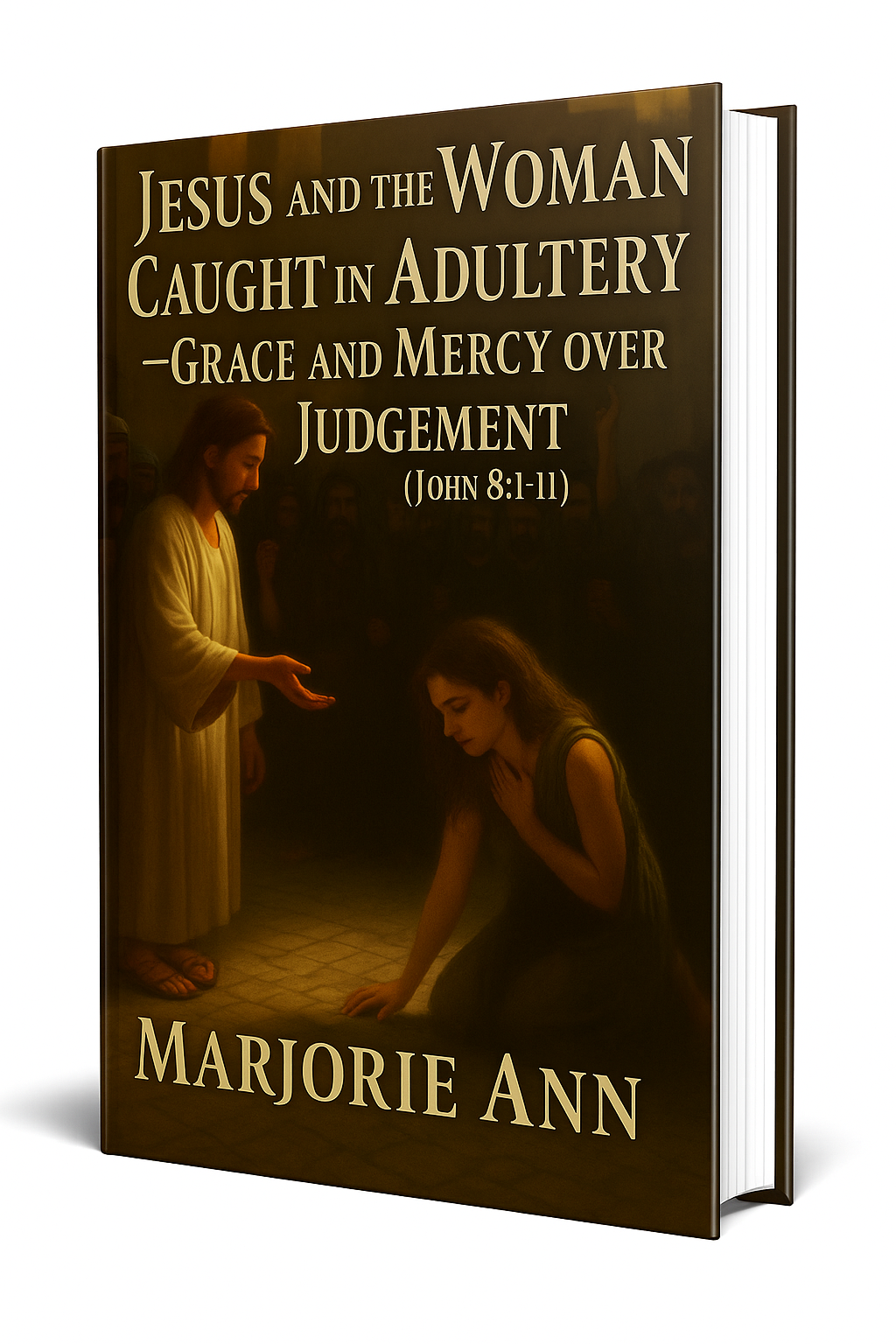
📘 Jesus and the Woman Caught in Adultery – Grace and Mercy Over Judgement
A powerful retelling of John 8:1-11. This book brings to life the depth of forgiveness, mercy, and God’s unwavering love.
👉 Check it now on Amazon 🛒💥
🔥 “Every great message deserves a home online.” 🌍💬🏡
Don’t let your calling stay hidden. Start a Christian blog or website using Hostinger — with 99.9% uptime, a free domain, and SSL, your voice can shine for God’s glory anytime, anywhere.
💥 Begin today. 🛒 Try it RISK-FREE! ✅
✝️ “Your body is God’s temple — care for it with purpose.” 💪💖🏛️
Renew your energy and restore balance naturally. Mitolyn helps support a healthy metabolism, giving you the vitality to live out God’s calling with strength and confidence.
🔥 Unlock Your Metabolic Power! ⚡Burn More Calories & Feel Great With Mitolyn. 💪
👉 Start Today. 🚀 Check Price Now. 🛒💰
💰 As a ClickBank & Amazon Affiliate, I earn from qualifying purchases.
📖 Acknowledgment: All Bible verses referenced in this article were accessed via Bible Gateway (or Bible Hub).
🚀 Want to explore more? 👉 Dive into our new post on Why Jesus? and experience the 🔥 life-changing truth of the Gospel!





